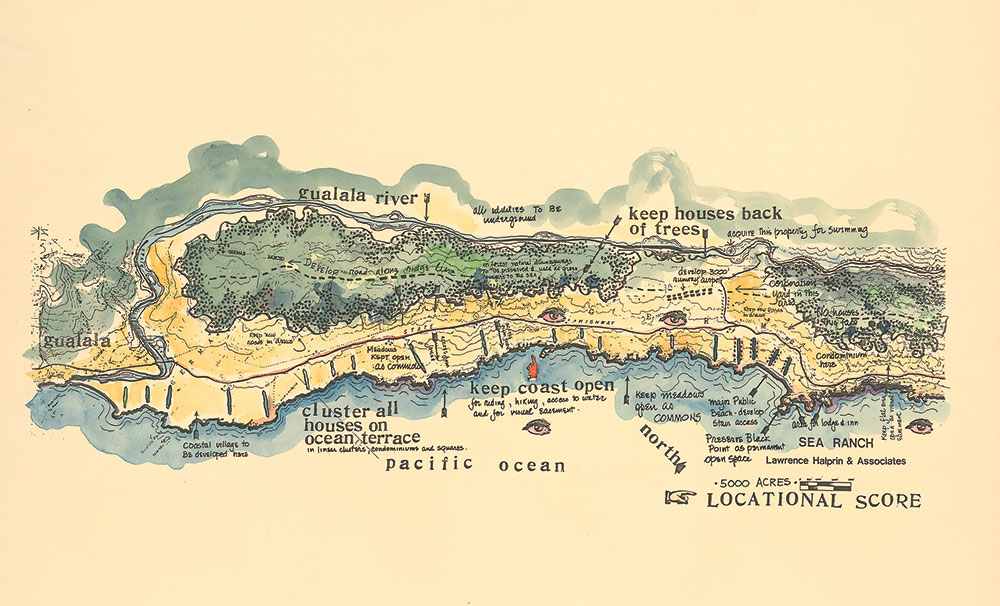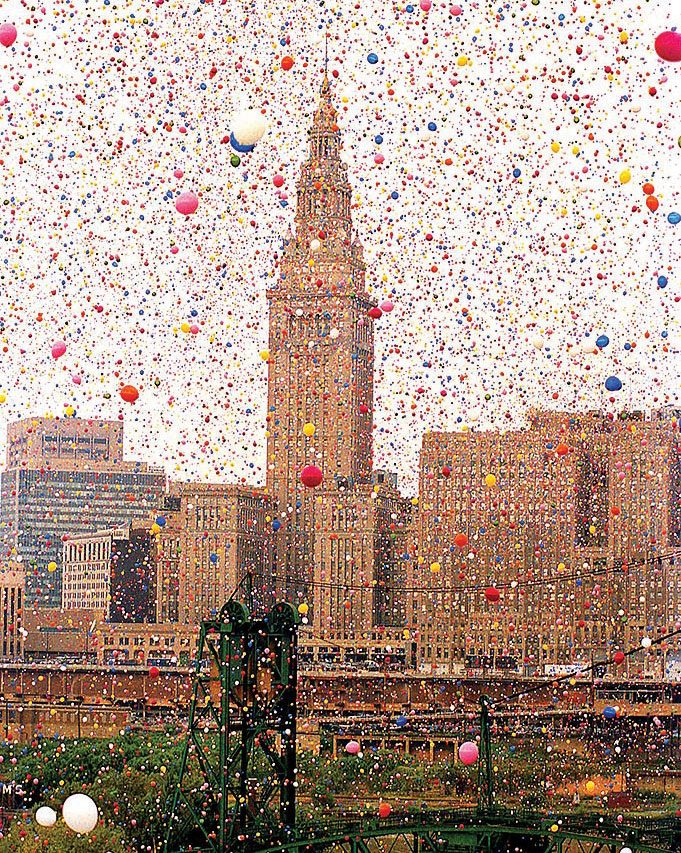Planning April 2019
Et Cetera
Exhibits: The Bay Area Puts Planning on Display

The Sea Ranch Master Plan. Map courtesy the Sea Ranch.
San Francisco and Oakland are chock-full of museums, installations, and public art. If you're headed there for NPC19 this month, these exhibits are a great place to start:
The Sea Ranch, The San Francisco Museum of Modern Art
A planned community designed in the early 1960s by Bay Area architects and designers, The Sea Ranch's master plan (above) emphasized open space, minimizing environmental impact, and building structures of unpainted native wood that blended in with their surroundings. The exhibit includes original sketches and drawings, archival and current photos, and a full-scale architectural replica of the community.
Take Root: Oakland Grows Food, The Oakland Museum of California
This exhibit looks at urban agriculture and examines "what factors determine where, how, why, and what is grown throughout the city." The museum found that some urban gardeners want better and healthier food choices, others do it for the joy of gardening, and some pursue urban agriculture for environmental reasons.
150 Years of Transcontinental Rail, San Francisco's California Historical Society
This year marks a century and a half since the transcontinental railroad was completed. CHS has two shows marking the anniversary: Overland to California explores how the railroad contributed to California's image as "a tourist destination and land of opportunity." In Westward the Course of Empire, photographer Mark Ruwedel documents abandoned or unfinished railroads in the American and Canadian West using a large-format view camera, similar to those used by 19th-century landscape photographers.
—Jim Sweeney
Sweeney writes about architecture, art, and design from Rockville, Maryland.
Film: Balloonfest

Image courtesy Thom Sheridan.
In this six-minute documentary short, director Nathan Truesdell assembles archival footage to retell the story of Cleveland's ill-fated attempt to change its image. The 1986 plan was simple: release a million and a half biodegradable balloons in a colorful, world record-setting spectacle. But as with many best-laid plans, things didn't go as anticipated — hilarity, lawsuits, and clogged waterways ensued.
This is required viewing for all urban planners working in arts and economic development.
Stream Balloonfest for free.
—Ezra Haber Glenn, AICP
Glenn teaches at MIT's Department of Urban Studies & Planning and writes on cities and film. Visit him at urbanfilm.org.
Ranked: Housing Markets to Watch
According to Trulia, mid-sized cities are about to see a population boom. The real estate site looked at job growth, vacancy rates, and starter-home affordability to determine the housing markets that are about to explode in the U.S.:
-
Colorado Springs, Colorado
-
Grand Rapids, Michigan
-
Jacksonville, Florida
-
Bakersfield, California
-
Austin, Texas
Planners Playlist: The Fight to Reduce Homelessness

WBUR, the Boston affiliate of National Public Radio, is taking stock of chronic homelessness in U.S. cities — and the innovations they're using to provide housing for the people who need it. In Atlanta, that amounts to creative leveraging of public-private partnerships. In Chicago, hospitals are treating homelessness as a medical condition. And in New Orleans, a Housing First approach — eliminating traditional program requirements like sobriety or service participation — has helped decrease homelessness by 90 percent since the years immediately following Hurricane Katrina.
Listen to The Fight to Reduce Homelessness.
Et Cetera is a curated collection of planning odds and ends. Please send information to Lindsay R. Nieman, Planning's associate editor, at lnieman@planning.org.


